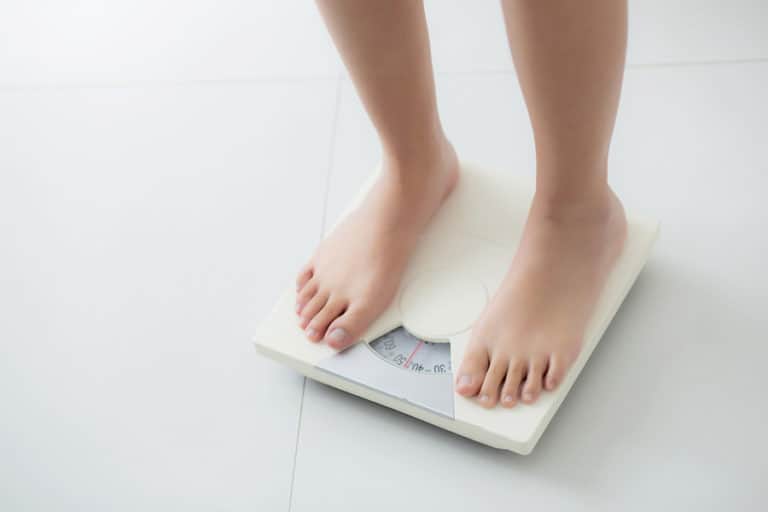What Is The Average Weight For 16 Year Olds?

Average Weight | BMI | Growth aspects | Maintain weight | Fitness Tips
Being a healthy 16-year-old with the optimum weight, a steady rate of growth, and basic levels of self-confidence can be a challenge.
Most teenagers and parents of teenagers find the 16th year a problematic phase to manage. It is also, simultaneously, the most exciting of the teen years.
This is the year when volatile changes and fast-paced growths have to struggle with the social expectations that come with the arrival of the “sweet sixteens.”
The idea of teenage beauty that comes with this age is often closely linked to the teen’s weight.
Read on for a detailed analysis of the average weight for 16 year olds.
Average weight by age and gender
At 16, the body is still going through most of the changes, growths, and disruptions that would have started at the onset of puberty.
Growing height and increased fat and muscle mass in the body result in an increase in overall weight.
So, how does one figure out the ideal weight for this age?
We have pulled out data from the Centers for Disease Control (CDC) [1]Centers for Disease Control and Prevention: Clinical Growth Charts to provide you with the average weight for teens at this age, segregated according to gender.
The CDC tracks the average weight of children and teenagers in the United States by age and gender. According to their data, the average weight for a 16-year-old boy is 134 pounds, and the average weight for a 16 year old girl is 119 pounds.
However, it is important to keep in mind that these are just averages. Some teenagers may be heavier or lighter than these averages and still be healthy.
Average Weight range table for 16-year-old-boys:
| Range | Weight |
| Healthy weight | 134 lbs |
| Underweight | 104 lbs |
| Overweight | 171 lbs |
Average Weight range table for 16-year-old-girls:
| Range | Weight |
| Healthy weight | 119 lbs |
| Underweight | 94 lbs |
| Overweight | 115 lbs |
Related Articles
What Is BMI?
Body Mass Index (BMI) [2]National Health Service: What is the body mass index (BMI)? is a number that is used to estimate if someone is at a healthy weight, overweight, or obese.
BMI does not directly measure body fat, but it is still a useful tool for assessing weight status. The CDC categorizes BMIs as follows:
| Range | Weight |
| Underweight | Below the 5th percentile |
| Healthy weight | 5th percentile up to the 85th percentile |
| Overweight | 85th up to the 95th percentile |
| Obesity | Equal to or above the 95th percentile |
How to use the BMI charts to track the development of teens?
The BMI charts for children and teens [3]Centers for Disease Control and Prevention: About Child & Teen BMI are used to track the development of teens.
Ideally, you should check your teen’s BMI-for-age chart annually to track their growth rate. To use the BMI charts, first, use a good BMI calculator [4]Centers for Disease Control and Prevention: BMI Percentile Calculator for Child and Teen to get the BMI for your teen.
Once you have the BMI, find the corresponding age and gender on the chart. Then, compare your teen’s BMI with the average weight for a 16-year-old of the same gender.
Understanding teenage bodies
Puberty puts the body through a lot of changes.
Boys tend to gain more muscle mass, and girls tend to gain more fat mass. All that translates into rapidly rising weight.
However, it is crucial to maintain a healthy weight to stay fit and avoid any health problems associated with being overweight or obese.
Understand the following aspects of teenage growth in order to make informed decisions on teenage health:
Physical changes: Physical changes are inevitable at this time, given that it is the most important of the growth phases of human life. The changes that occur in this phase have long-term health implications.
Obesity or poor weight in this phase can lead to lifetime illnesses like diabetes, blood pressure issues, weak bones and joints, and so on.
Hormonal changes: Hormonal changes are the driving force behind every growth, change, disturbance, or imbalance experienced in this phase.
The hormonal changes in this phase can have long-term physical and mental health implications. It can lead to some children experiencing improvement in certain conditions like ADD or even depression. Comparatively, certain others may experience worsening of symptoms or the appearance of new mental health disorders.
It is important to remember that there is nothing abnormal with this.
Self-image: Teenage is the phase of heightened self-awareness. The many changes in the body make all teens extremely sensitive about their looks. This can lead to body image issues, eating disorders, and even stress and anxiety in some teens.
Significance of healthy weight during teenage
Despite the volatility of teenage weight, it is important to ensure that a 16-year-old’s weight is growing at a sustainable rate.
A healthy lifestyle, complete with a nutritious diet and regular exercise, is non-negotiable at this age. This way, teens can stay fit and avoid any long-term health problems associated with being overweight or obese.
Here are 3 major reasons why a healthy weight and a healthy rate of weight gain are important at this age:
1. Implications for healthy growth
Teenage years are one of the most important growth phases in a person’s life. It is during these years that the foundations for physical and mental health are laid.
Maintaining a healthy weight during the teenage years is crucial as it helps reduce the risk of developing obesity and other chronic health conditions later in life.
2. Risk of chronic diseases
Obesity is one of the most common chronic health conditions seen in teenagers today. Between 2017-2020, the obesity rate [5]Centers for Disease Control and Prevention: Childhood Obesity Facts among children and adolescents in the USA was 19.7%.
With such a high risk of obesity comes the risk of chronic health conditions like type 2 diabetes, hypertension, and cardiovascular disease. Maintaining a healthy weight during the teenage years can help prevent the onset of these diseases.
3. Impact on self-confidence
A healthy weight is not only about reducing the risk of chronic diseases. It is also about feeling good about oneself, having more energy, and leading an active lifestyle.
When teenagers are at a healthy weight, they are more likely to have higher self-esteem and confidence. They are also less likely to suffer from fatigue and low energy levels.
Tips for Staying Fit as a Teenager
There are lots of things you can do to make sure that your 16-year-old maintains a healthy weight. Here are a few effective fitness tips for teenagers:
- Make sure that they eat a balanced diet with plenty of fruits, vegetables, whole grains, lean protein, and low-fat dairy.
- Limit sugary drinks like soda, energy drinks, sports drinks, and sweetened coffee or tea.
- Limit the consumption of processed foods like chips, candy, cake, cookies, etc.
- Teenagers must sleep for enough hours to prevent weight gain.
- Teenagers need to be active for at least 60 minutes every day. Playing sports, walking or biking to school, trekking, and dancing are all great ways to keep your teens on their toes.
- Discourage sedentary behaviors like watching TV or playing video games for long periods. However, if they are still glued to their screens, you can get them to try small exercises like push-ups, sit-ups, or squats while watching TV.
Conclusion
The 16th year of teenage is both a crucial and sensitive age. Maintaining good health and optimum weight, at least to the extent possible, is essential to avoid any health implications in the future.
The growth charts and weight-range tables provided above can be your guide in assessing your 16-year-old’s health.
However, it’s important to keep in mind that these are only averages. Wherever your child stands in any of the above tables, health ultimately matters more than mere numbers.
Focus on providing them with a healthy diet and lifestyle to ensure their long-term health and well-being.
References
| ↑1 | Centers for Disease Control and Prevention: Clinical Growth Charts |
|---|---|
| ↑2 | National Health Service: What is the body mass index (BMI)? |
| ↑3 | Centers for Disease Control and Prevention: About Child & Teen BMI |
| ↑4 | Centers for Disease Control and Prevention: BMI Percentile Calculator for Child and Teen |
| ↑5 | Centers for Disease Control and Prevention: Childhood Obesity Facts |







